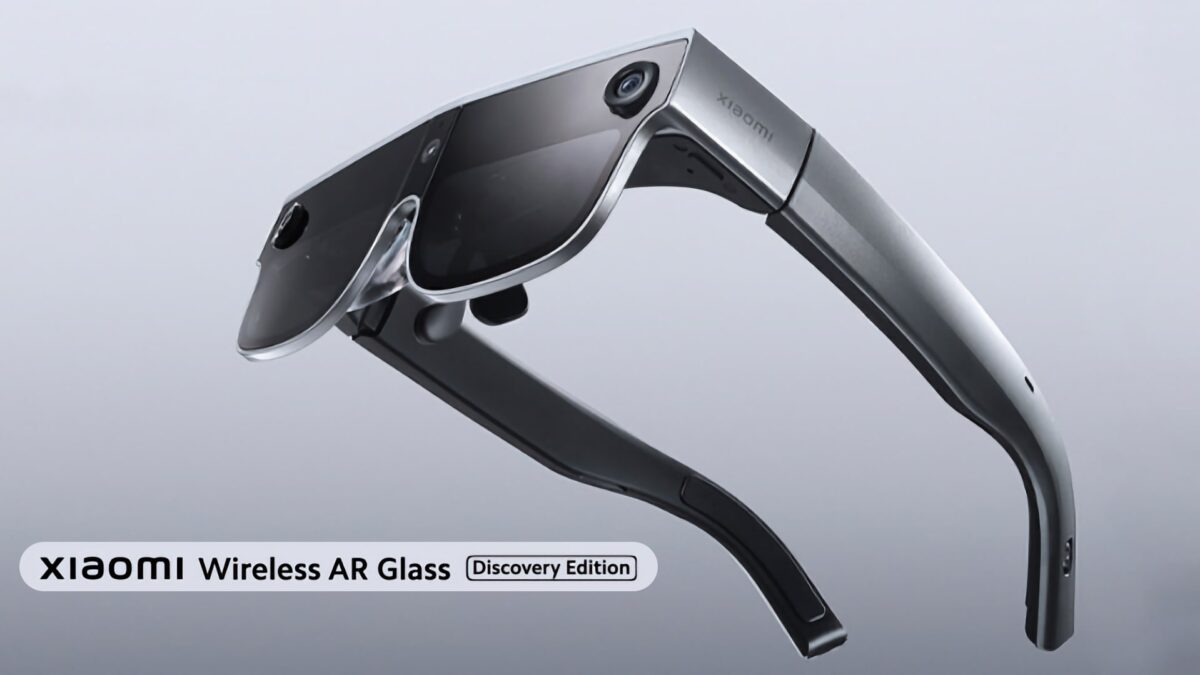Xiaomi's AR glasses have near retina sharpness & gesture control

Xiaomi demonstrated an advanced prototype of AR glasses, establishing the AR revolution is closer than you might think.
At MWC 2023, Xiaomi unveiled lightweight AR glasses with integrated color microOLED displays with gesture control and the ability to switch to VR mode for complete immersion.
Full specifications of the Wireless AR Glass Discovery Edition are unavailable, but Xiaomi provided several details in a blog post and video.
These are clearly filled with technology and won't be confused with ordinary glasses, weighing just 126g, despite sporting three cameras, two displays, a battery, and the hardware necessary to process video I/O and communicate with other devices wirelessly.
Several companies have announced that AR glasses will be playing a bigger role in technology this year. Vuzix Ultralite is a stylish smart glasses reference design announced at CES, and products are expected to arrive this year. Niantic, the Pokemon Go developer, teased its prototype AR glasses last year.
Xiaomi isn't new to AR technology. Xiaomi's Mijia smart glasses with green displays, released last year, are available to purchase in China. Now the tech giant is pushing into full color and full AR capabilities with the newest prototype.
Near retina-level displays
At 58 PPD (pixels per degree), Xiaomi's microOLED display nearly matches the sharpness of human vision. 60 PPD is the average angular resolution of the retina, making this a very sharp display. The resolution and FOV were not shared.
The brightness is similar to a premium phone at 1,200 nits. That might be insufficient for bright environments, but Xiaomi Wireless AR Glass Discovery Edition can switch to VR mode by blacking out the electrochromic front lenses.
In AR mode, you look directly through the clear lenses that don't seem to have any tint. Xiaomi placed three cameras on the front of the AR glasses to scan the environment and detect surfaces for the placement of virtual objects on tables or against walls.
AR capabilities
Hand-tracking allows you to interact with the Xiaomi Wireless AR Glass Discovery Edition while your phone rests securely in your pocket. You can also use your phone's touchscreen to navigate apps and games, while the glasses show a much larger view of the screen.
Xiaomi also demonstrated remote control of smart devices with hand gestures, turning a light off just by pointing at them and pinching a virtual off button that appears in the view. Virtual screens can be moved and scaled with hand gestures as well. It seems to be a well-thought-out AR interface.
The onboard chip used in Xiaomi's AR glasses is the Qualcomm Snapdragon XR2 Gen 1, the same chip found in the Meta Quest 2. You must pair a compatible phone before use, so the phone handles at least some processing. A Xiaomi 13 or another phone that works with Snapdragon Spaces is needed.
While this is only a prototype, at least one YouTuber had a chance to go hands-on with the AR glasses and was very impressed. Ben's Gadget Reviews confirmed that this product was nearly ready for consumers. In Ben's opinion, Xiaomi's official video didn't exaggerate the capabilities of the Wireless AR Glass Discovery Edition, and it matched his experience.
The only issue might be battery life. Ben pointed out that Xiaomi recharged its AR glasses halfway through the 30-minute demonstration. We don't know the battery level that the glasses started with, so it's impossible to say how long they would last with a full charge.
Xiaomi Wireless AR Glass Discovery Edition is compatible with Qualcomm Snapdragon Spaces, OpenXR, and Microsoft MRTK AR frameworks. That means many apps and games should already work with this prototype, and developers are building more for a future metaverse.
Note: Links to online stores in articles can be so-called affiliate links. If you buy through this link, MIXED receives a commission from the provider. For you the price does not change.